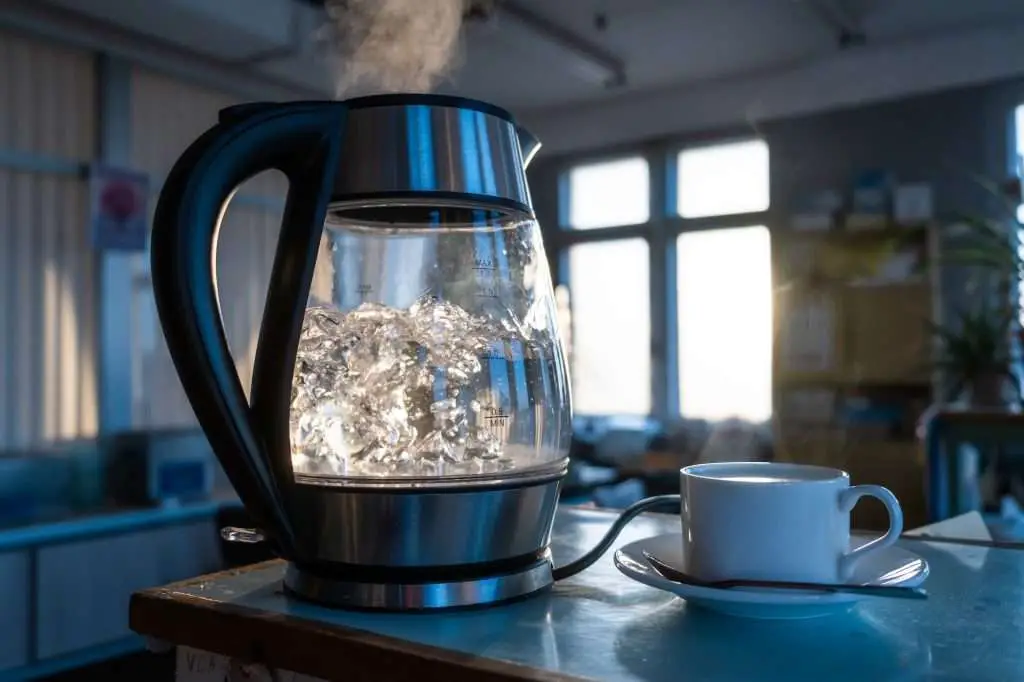Dilution in cocktails primarily comes from our good friend ice and is absolutely key to mixing well balanced drinks.
However, we sometimes require more dilution that the ice we are using readily affords us. In these instances, we encourage you to use water, where it suffices.
Thankfully, water is (currently) highly accessible, so wherever we are we should be able to furnish ourselves with the following incarnations of water:
- Chilled water
- Soda water
- Boiling water
You should seek to have each of these at hand as your cocktail making session requires. As required, you will use the water to dilute drinks to an optimal level, making them easier to consume and creating the perfect balance of taste.
In this post, we’ll explain the basics of dilution and how the presence of water in cocktails is more important than many realize.

Chilled water in Cocktails
When starting a drinks mixing session, fill a mixing glass/jar with ice and halfway with water.
This will do 2 things:
- Firstly, the mixing vessel will cool well, so any stirred drinks you mix will benefit from a well-cooled bed.
- Secondly, you will have ice cool water on hand.
This icy water can be added wherever a smidgen more dilution, but no temperature increase is required.
Sometimes, ice can be excessively dry (eg if stored too cold). Pouring a small amount of very cold water over very dry ice can temper it slightly before the actual ingredients are added, preventing the apparent absorption of liquid into the dry ice.
Soda water
For soda, choose bottles between 8 and 14 oz in volume.
If a bottle is not finished shortly after being opened, a limpness is noticeable in the finished drink.
Whenever you see the words “topped with soda,” adopt an antipodean philosophy and invert.
Pouring bubbles onto a drink with a texture different from water will almost guarantee overflowing mess.
Instead, pour the majority of soda into the glass beforehand and then add the other ingredients on top of the soda. Much more controlled. If you need to add a tiny splash of soda at the end to bring the liquid to the required level in the glass, this is much easier than needing to add eg 3floz.

Boiling water; Don’t forget the hot drinks
Much of modern cocktail culture is an American creation and cherishes the idea of cool refreshment . But many of the early mixed drinks (from days before ‘cocktail’ existed as a word) were forms of sustenance and often served warm.
Flips, punches, mulls and toddies have all been enjoyed warm through the ages and can totally hit the spot during the coldest times.
A steamer attachment on a coffee machine is a great way to heat and texturise a drink.
Mastering water dilution in cocktails
Water is a fundamental part of making great cocktails and though often overlooked, can make a huge difference in the quality of the drinks you make.
Utilizing the three forms kinds of water detailed here; chilled, soda and boiling, you can fine-tune the dilution of your drinks for a perfectly balanced experience. Experiment with water dilution to create perfectly balanced, gorgeous drinks for every occasion.
Marrying up your water selection with a variety of ice and your selection of bottles, your home cocktail bar should be well equipped to make a vast array of drinks.
Can I use sparkling mineral water in place of soda water in cocktails?
It’s better not to. As soda has little flavor, the reason for its use instead of non fizzy water is effervescence. Therefore, the more bubbles the merrier. Like this, even a small amount of fizzy water lends a pleasant sparkle to a cocktail.
Club soda vs tonic water in cocktails?
Soda vs tonic is all about flavor.
Soda is almost flavorless and unsweetened. Tonic is laced with bitter, aromatic quinine and sweetened. In the better tonic waters, the sweetness balances the bitter aromas and produces a great mixer for wherever you want that particular twang.
Soda is as universal a mixer as you will find due to its neutrality, shelf life and low price.
If you are obliged to choose only one for your bar stock, soda would be the one. For general mixing, stocking a ratio of 80:20 – 90:10 in sodas favour should work well.
The obvious exception would be G & T lovers. There are a heap of delicious cocktails featuring aromatic ingredients such as Cynar or grapefruit to spruce up the classic pairing for when the mood so takes you.
